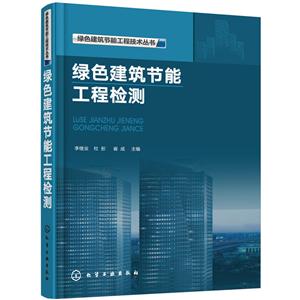
作者:邓旻衢等
页数:195
出版社:科学出版社
出版日期:2016
ISBN:9787030447241
电子书格式:pdf/epub/txt
内容简介
Shu Geng、Micheal Deng Eugene Tssui著的《Beyond Green Building–Transformation in Design and Human Behavior》讲述了:Architects Michael Deng and Eugene Tssui present the current and anticipatoryevolution of ecological thinking as applied to the built environment and human behav-ior change. We are given the current societal outlook of a LEED ( Leadership in Ener-gy and Environmental Design ) -based paradigm (Part I) and the proceed to investi-gate the coming sociological issues that are profoundly effecting our society andculture resulting in an emotional/behavioral motivations and needs (Part II) .
Rarely does a book cover the deeper motivations of the human psyche and howthat directly influences our designed, built, environments.
This pioneering book covers the gamut of human behavior, i.e. , the growingepidemic of global obesity, the pervasive presence of bullying in all walks of life, andthe irresponsible treatment of the earth and its resources. This is a pioneering work thatdares to tread where others fear to go.
目录
1.3 How to achieve a high performance building?
Chapter 2 Case study one—Gui River project2.1 Preface2.2 Site2.3 Humanistic approach2.4 Urban systems2.5 Architecture2.6 SustainabilityChapter 3 Case study two—FCG plamung3.1 Introduction3.2 Site analysis3.3 Planning strategy3.4 Urban living3.5 Architecture3.6 Eco system + sustainabilityChapter 4 Case study three—GZ Asian game building4.1 Thebrief4.2 The building4.3 Environmental strategy4.4 Executive summaryPart Ⅱ Being the change to design and reshape our worldChapter 5 The interdisciplinary relationship and structure of human sustainability5.1 Introduction5.2 The tetrahedron model5.3 Conceptual framework5.4 Our social world5.5 Our economic world5.6 Our environmental world5.7 Our physical world5.8 Interdisciplinary relationship: Life’s restorative design5.9 Strengthening the social5.10 Research questions5.11 The economic equation5.12 Economic obsession5.13 Ecological know—how: real or perceived?
5.14 The social challenge5.15 The environmental plight5.16 Our health5.17 Restorative directive5.18 SummaryReferencesChapter 6 Issues and problems6.1 Ships6.2 Airplanes6.3 Automobiles6.4 Electricity, or the manufacturing and burning of coal6.5 Travel6.6 EpilogueReferencesChapter 7 An ecological life means questioning and changing habits7.1 the necessity of change to preserveour lives and our future: we must be the change, we seek, to find the true meaning of health7.2 SummaryReferencesChapter 8 Designing for future: architecture, humanity and nature, in communion8.1 Architecture as an embodiment of social, economic, environmental and physical/moral health8.2 Architecture as ecological process and change: the way of nature8.3 A new language of design: to save our lives, and our home, the earth8.4 Architecture as an adaptive organism8.5 Small is beautiful8.6 Transluscent walls8.7 Insulation8.8 Waterless toilet8.9 Multiple functioning spaces8.10 To the future, now8.11 EpilogueReferences















